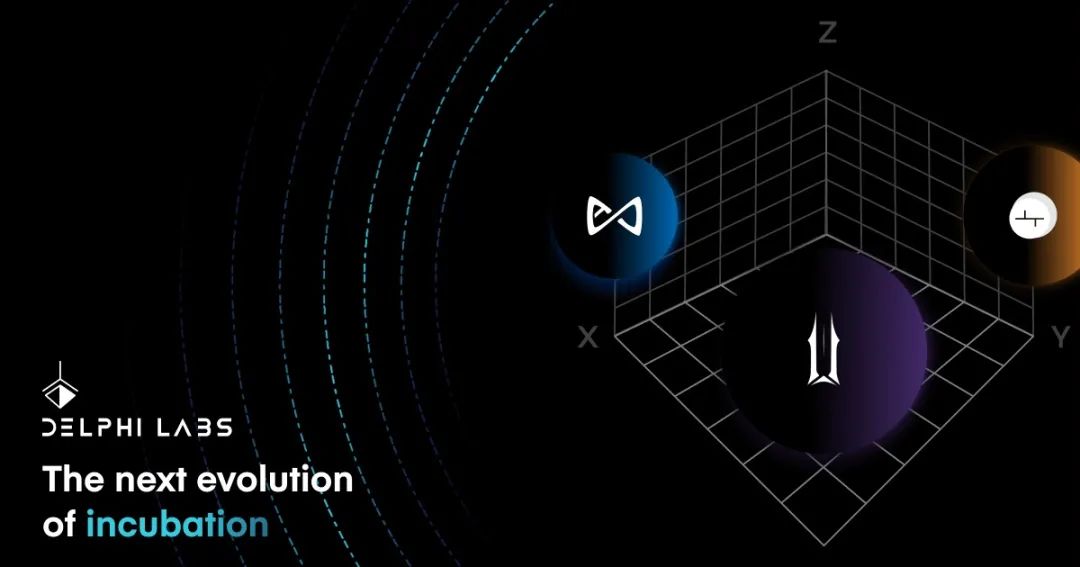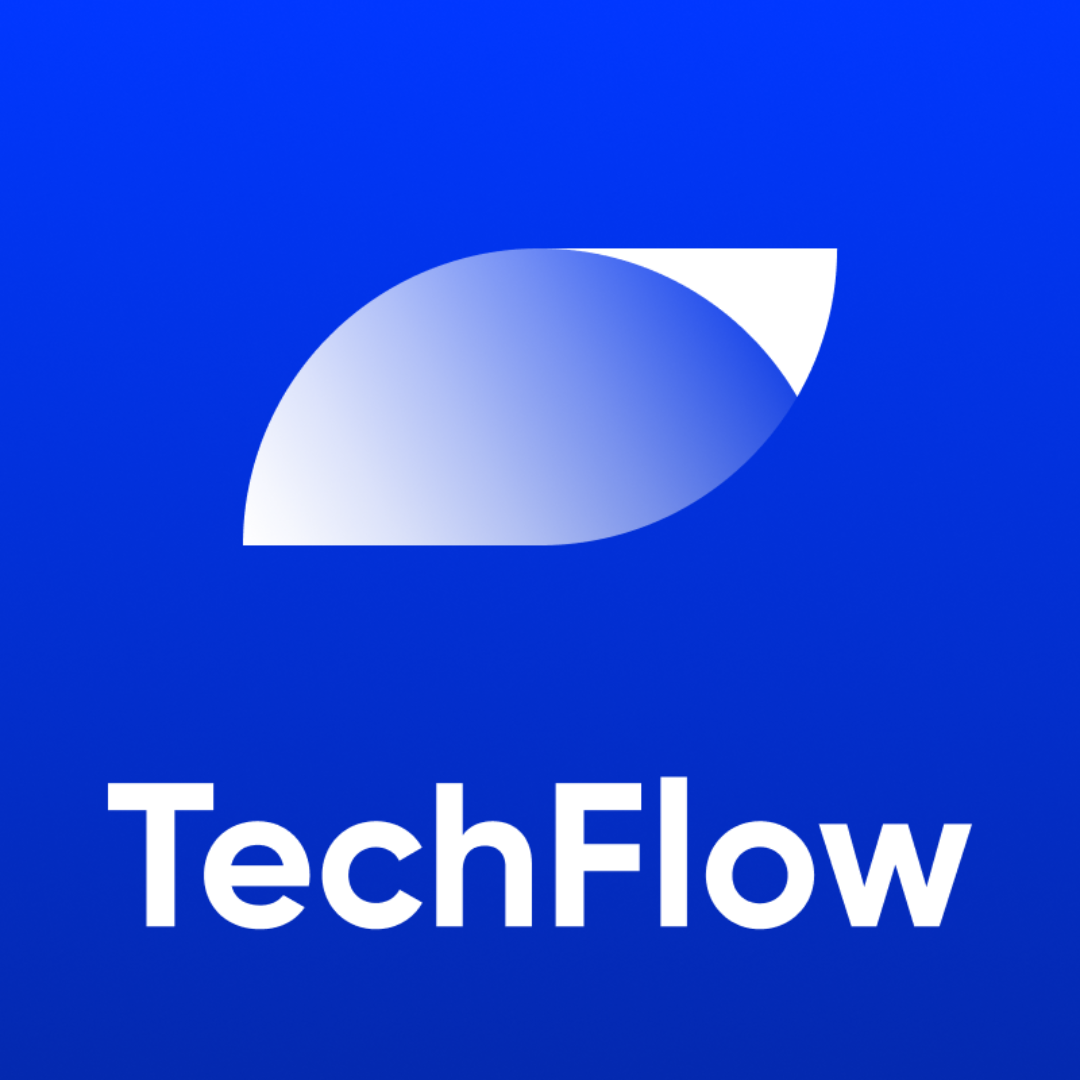Axie与Luna背后的经济模型大师,Delphi Labs是如何炼成的?

本文由深潮 TechFlow 志愿者 0xz 整理编译自Delphi Labs团队在葡萄牙度假期间的一期播客内容,嘉宾是Delphi Labs的负责人兼Delphi venture的管理合伙人Jose Macedo和联合创始人Yan Liberman。他们主要介绍了Delphi Labs的诞生,如何帮助Axie设计经济模型,与Terra的故事以及正在孵化的项目等……
Delphi Labs的成长之路或许值得许多从业机构学习研究,没有高起点和光鲜的背景,靠着经济模型设计这一核心竞争力成为目前行业T1的存在,铸造Axie的辉煌,卡位Terra生态,站在VC中的上游,游离在一级内卷战争之外,毕竟谁会拒绝一个经济模型设计大师的帮助呢?
1.在2018年创办了Delphi,此后很长一段时间里都没有拉到任何外部资本,只能通过咨询业务维持生计。
2.更大的Alpha附加值来自于与有意义的项目合作,而不是与其他基金合作。
3.项目的用户大多只为自己考虑,而Token则是可以平衡大多数用户的利益,使项目得到更高效发展的一种协调机制。
4.Axie的经历给了我们很大的信心,这是我们第一次通过研究发现项目,然后通过咨询工作和项目合作,最终和项目一起成长。
5.类似于CBC这样的中心化机构对于稳定币的监管是不可避免的,但对于LUNA之类的稳定币项目是非常大的利好。
6.USDT的目前总供应量已经有780亿美元,未来一旦有个新的可靠的稳定币诞生,它的天花板将非常高。换句话说,稳定币市场是目前加密领域最大的市场。
7.链上的资产想要获得足够的信用背书的话,就需要不断增加抵押品,并不是所有的抵押品都是好的,并且随着抵押品大到一定程度,这种模式一定会出现中心化稳定币的所有问题。
8.算稳另一个有意思的点是在于它尝试创造尽可能多的激励机制来试图让价值锚定真正保持下去,本质上这类似于一种自娱自乐的游戏。
9.一个好的发行策略,对于项目来说,是一条护城河,Token发行机制的全部意义在于提高价值发现的能力。
10.加密的真正创新是以去中心化的方式来创建激励系统,让去中心化的项目能提供和中心化服务一样的服务水平,也就是说,用去中心化的方法来重建中心化的世界。
11.DAO 是每个人对所有事情进行投票吗?我不这样认为,我认为治理需要专业化,即需要专门的委员会或小组,这些委员会或小组有权在某个领域做出决策,然后向 DAO 的其余成员报告。
12.我们认为每个人的链上身份将基于个人拥有的 NFT,但要做到这一点,需要通过特定操作进行组合。此外,我认为NFT也可以成为项目忠诚度指标和保留策略的组成部分。
13.很多时候,让人长持NFT是非常困难的,尽管有许多方案来解决这个困难,比如说给NFT赋能,给予持有NFT的人相关折扣,但这些方案都存在一个问题,他们都是零和的,在这个模式里,总会有人牺牲部分利益。
以下是对话原文,TechFlow在不改变原意的基础上进行了删减,全文内容较长,信息量很大,你忍一下,如有部分细节有所编译错误,请见谅。
Delphi Labs的诞生
Jose:与外界的想法不同,我们其实没有那么好,我们一开始只是为了生存才聚到了一起。
Yan:的确是这样,我们做咨询起家,在2018年创办了Delphi,此后很长一段时间里都没有拉到任何外部资本,只能通过咨询业务维持生计。
当时创建Delphi的初衷是发挥自身的技能成立一个基金团队,去真正研究推动Token价值剧烈波动的因素。后来我们逐渐明白,更大的Alpha附加值其实来自于与有意义的项目合作,而不是与其他基金合作。所以,我们开始为一些已经上线或还未上线的项目提供咨询服务,尽可能地为他们提供合适的Token经济模型,与其共同成长。
后来,随着公司业务的深入,我们就成立了Delphi Labs,实验室的主要工作就是设计完整的代币经济系统,或考虑修改一些代币模型里有意义的子模块。
一开始的时候,实验室对于客户是来者不拒的,因为我们借此获得利润, 但随着规模扩大后,我们可以去挑选客户,并为那些真正值得的项目服务。我们选择和那些项目一起成长,比如说,我们选择的报酬里,一部分是现金(现金可以维持公司运转),另一部分就是这些项目的Token。
与Axie Infinity的合作
Jose:与那些项目的合作对我们来说是兴奋剂, 因为我们必须不断学习才能跟他们一起进步。过去有一段时间,我们与 Axie 合作,设计他们的Token模型,Axie现在获得了很大的成功,我们也从中学到了很多可以用于下次设计的宝贵经验。
Yan:与Axie的合作是我们和项目的第一次完整合作,从发掘,到调查,到参与,最终一起成长。我们从 2018 年末开始关注游戏赛道,当时有很多游戏,但大多数都在虚假营销,很糟糕,但Axie显得十分与众不同。
对我们而言,发掘到Axie真的收获很大,但当时能做的事并不多,也没有任何参与他们项目的方式,只能在尽职调查过程与团队保持密切联系,我们联系了每个团队成员并和他们进行了交谈,从而真正了解他们想做什么。因此,当他们在2019年尝试开始考虑推出代币时,我们立马就参与进去了,帮助他们进行设计,而且我们2020年一整年都保持着最初创业时的激情。
Yan:在Axie产品上线后,我们担心过一段时间,怕有很多模仿者跟我们形成竞争,但很幸运的是,模仿者最终都失败了,Axie成了这个方向的龙头。这次的经历给了我们很大的信心,这是我们第一次通过研究发现项目,然后通过咨询工作和项目合作,最终和项目一起成长。
什么是Token经济学?
Jose:在Axie的合作完成后,很多人来咨询我怎样才可以设计出一个好的Token经济系统。这个问题得具体项目具体分析,需要根据对应的项目,从上到下设计整个模型,设计相应的Token激励机制,当然也包括设计相应的安全模块。对于一些涉及到杠杆的项目,我们还需要设计出更好的保险机制。而这所有的设计都需要对项目有比较透彻的理解,至少得知道谁是供应方,谁是需求方,项目需要在什么时候奖励谁。
Yan:确实,对项目的透彻理解非常有助于思考关于项目Token的定位,回想2017 年,那时Token只是无需太多规则即可快速筹集资金的方式(ICO),催生了很多不好的泡沫,也直接引发了2018的熊市。熊市中,人们对Token的认知逐渐趋于不同,多数人认为Token必须要依赖于具体的价值面,不能再是纯粹的炒空气,也就有了所谓的基本面估值。
Jose:对的,想起2017年时给Token设计经济系统,那时跟项目合作就像乞讨一样,而且他们要求的Token经济系统总是充满问题。
Yan:不要再这样做了, 那是剥削用户,是非常错误的做法。
Jose:现在当然不会这样了,但那时候,项目方们真的只是把Token视为一种融资工具,融资之后也没有真正做事的意愿,很不健康。
Yan:是的。但在那之后不久,Token的经济系统开始逐渐回归正常,至少很多项目方都认识到良好经济系统的重要性,例如两个同类型的项目,那Token设计比较好的项目胜出的概率就更高,这也是为什么Token的经济系统在整体上非常有价值的原因。
当然,更深层次的观点是项目的用户大多只为自己考虑,而Token则是可以平衡大多数用户的利益,使项目得到更高效发展的一种协调机制。
Jose:如果大家想要深入了解Token经济系统的设计过程,请在脑海中模拟一个环境:每个人在我们所设计的机制中会如何行动。期间去思考群体行动背后的行为模式稳定吗?然后尝试找到那个不稳定点,试着修复它,修复好后再多次重复之前的流程,直到实现稳定为止。
Yan:这种模拟对于设计很有帮助,它不仅限于对未发生的模拟,更重要的是复盘,你可以去回顾一些有意义的项目,思考它们为什么成功?又为什么失败?然后挑选不同项目的组件并将它们拼凑在一起,综合思考下这将会发生什么?挺有趣的。
Jose:更重要的是,在我们开始设计Token经济系统时,必须超级深入地了解这个项目,必须了解它的一切,了解项目机制是如何运作?供应方是谁?需求方是谁?增长计划是什么?基于这些去找出我们可以提供帮助的方法。
举个例子,THORchain 基本是从零开始的,在我们深入了解他们的想法后,帮助项目方构建了整个THORchain,以及相关的 API。此后,我们开始招聘开发人员, 开始扩展我们的工作范围,建立了实验室,深化了咨询,最终合并出了实验室并以多种方式帮助项目发展。我们也给Perp在永久协议的机制设计方面提供了很多帮助,并帮助他们通过 Aave 修复多空偏差。
从咨询业务转为Building
Jose:除此以外,我还帮他们设计了一个新的安全平衡器模块,且帮助他们完成了两个混合研究,准确的说是设计了一个新的产品。与这些团队合作,让我们额外收获了不错的名声。
其实,在帮助项目设计的过程中,我们逐渐弄清楚我们想要做的事。想要实现这些事情的话,我们认为唯一的方法是早点开始自己建立项目,实验室也就自然地发展到了下一阶段。
Yan:是的,此后不久,我们关闭了咨询部门,只是因为我们意识到花时间在实验室里研究项目更有意义, 这是我们可以产生更大影响力和更深参与度的地方。
与Terra Luna的故事
Jose:目前我们的很多孵化均专注于 Luna 和 Solana。原因是一年前,我们开始实验室时,就将 Luna 和 Solana 确定为两个值得关注的Layer 1。当然,我们的一个重点关注的方向就是稳定币,稳定币的发展可以追溯到很久以前,包括ESD以及流动性等。
Yan:是的,我们对此非常感兴趣,同时认为这是一个巨大的市场。
我们在2018 年底-2019 年初发表报告时的想法是提供一些可行的东西。比如,市场接受度到什么程度时,什么样的Token更有价值?如果回头看我们的早期报告,可以发现内容格式都很像,部分原因在于我们有一个明确的价值增值模型。我们在那时就意识到了稳定币的功能和巨大市场空间,所以逐渐开始深入研究稳定币相关Token的经济模型,并且取得了相关的进展。
Jose:记得稳定币是我们在2019年第一次线下见面时谈论的话题之一,我们都喜欢它的价值捕获。它是加密经济好坏的象征之一,也是少数几个能代表加密基本面的Token。但问题在于对信用的需求与对稳定币的需求是完全不相关的,增加稳定币的Token供应非常困难,需要不断增长的需求。
Yan:准确的讲,稳定币可以理解为原材料,假设输出产品是信用的话,那产品工作所需的原材料就是稳定币。
Jose:也可以理解为信用的分支。
Yan:是的。现有的一些稳定币在价值锚定方面做得不错。但仍然存在一些问题,比如说USDC,实际上USDC可以被冻结,它不是真正的去中心化。
Jose:而更糟糕的问题在于随着链上资产规模的扩大,很多去中心化稳定币都会出现中心化抵押品以及稳定币所有问题。目前很多不上链的资产,他们都需要经过中心化的审查才能获取信用背书,链上的资产想要获得足够的信用背书的话,就需要不断增加抵押品,并不是所有的抵押品都是好的,并且随着抵押品大到一定程度,这种模式一定会出现中心化稳定币的所有问题。
Yan:你说得很对,事实上近两年的一些项目的暴雷已经验证了你的判断。2019年以后,算法稳定币开始流行起来,我认为算稳的核心思想是设计一个真正去中心化的不需要任何抵押品的稳定币,算稳另一个有意思的点是在于它尝试创造尽可能多的激励机制来试图让价值锚定真正保持下去,本质上这类似于一种自娱自乐的游戏。
但这并不意味着他是错的或没有意义的,对于个人而言,我从算稳中学到了许多,逐渐开始分析稳定币经济模型中起决定性作用的因素有哪些。比如在做市商模型中,供应是杠杆需求的产物,进一步具体到ESD(Empty Set Dollar)上面,我们可以发现很难保持着两者的平衡,也就是说很难保持稳定。
Yan:比较常见的方法是通过激励措施来扩大供应以及抵押品,比较极端的措施就类似于现在美元的无限QE,这种方法的代价就是会失去对于供应以及抵押的控制,因为你在激励的时候需要提前提供一部分抵押品。虽然这在某种程度上的确可以解决很多问题,但需要与去中心化的社区组织的密切合作,并且我猜你也注意到了,很多时候这种合作往往是比较低效的,这就是另一个问题了。
Jose:你解释得很好,本质上这种模式就是通过庞氏模型来增长,即使他们换了个说法叫做需求供给和流动性。类似于ESD之类的稳定币,就是通过一个叫做流动性挖矿的庞式模型来引导并保持一个稳定的Token供应和流动性。
但这样就会产生一个问题,在这种模型里做市商就是Token的负债,需要资金激励来引导供给,但在某一时刻,一旦庞氏激励停止,就会有大量的尚未偿付的稳定币需求,这实际上可以理解为Token的负债,从另一种角度讲,导致这个问题出现的原因是目前并不存在非投机性的需求。
Jose:一旦问题发生,接下来唯一可能发生的情况就是死亡螺旋。所以我们在激励模型方面花了很多时间去设计来维持稳定币的流动性。在设计过程中,我们得出的一个主要结论是,需求很重要。
尽管我们可以在激励机制上设计任何事,但最终总是需要一些人把Token作为一种稳定的货币来使用,因为我们需要这些人的需求。无论接下来的循环是什么,无论激励措施是什么,稳定的需求对于稳定币来说都很重要。
当我们经历了LUNA的设计过程,以及经历了其他很多事之后,我们更加确信这个结论的正确性,虽然LUNA本身的激励机制的设计非常有意义,但更重要的是LUNA尝试创造出一个与庞氏激励模型无关的稳定币UST的稳定需求,一定程度上它成功了。
Yan:理想情况下,要追求一个经济模型的高质量,是需要脱离Token进行考虑的,但如果只是希望经济模型稳定的话,只需要围绕着这个稳定币Token构建出真正依赖于它的生态就可以了。
Jose:LUNA其实就是这样一种模型,所以在我们今年的设计中,有很多地方是模仿了LUNA,当然,这个事情肯定是提前与项目方与基金会交流过了。
其实关于LUNA,有一点很重要,那就是我认为LUNA并不是一个实验性质的项目。因为包括我们在内的很多人,都在它的基础上进行建设,并且我们在建设和投资上都投入了大量资金。但就稳定币整体板块而言,这整个板块确实是个实验,但正因为有着不确定性,上涨空间才十分巨大。
事实上,无论是从圈内看,还是从圈外看,稳定币板块都有着很多的重量级的利好,这一点在我们之前的报告中已经讨论过了,所以今天不会讲太多。但你只需要明白一点,那就是类似于CBC这样的中心化机构对于稳定币的监管是不可避免的,且这样的监管对于LUNA之类的稳定币是非常大的利好。此外,虽然现在ALGO的稳定币在稳定运行,但仔细分析就知道它的挤兑和资不抵债风险是非常高的。
Jose:总体来说,这种去中心化稳定币体系要是能够真正建立的话,还有一个巨大的好处,就是资本高效利用率的稳定币Token能够在极大程度上抵抗风险,也就是所谓的反经济周期性。
简单的讲,当加密货币的熊市刚开始时,Luna的Token价格肯定会下跌,但在熊市的过程中,Luna就是会十分稳定甚至会表现得像牛市一样。所以,现在有越来越多的团队持有了UST,随着UST需求增多,Luna的流动性随之提高,所以在LUNA身上会有明显的反周期特性,这也是LUNA最具有魅力的地方。
其实,加密世界在同时具备超级高效的资本,完全分散的审查制度和稳定币的前提下,其发展是不可限量的,这三个条件都会对加密产生非常大的促进作用。就拿稳定币来说,USDT的目前总供应量已经有780亿美元(更新后),未来一旦有个新的可靠的稳定币诞生,它的天花板将非常高。换句话说,稳定币市场是目前加密领域最大的市场。
Jose:目前UST还没有足够的影响力,这让我们必须考虑UST的潜在下行风险。所以我们开始观察相关的生态系统,也看到了一些很酷的东西。
观察生态系统确实帮助我们更加深入了解了它的潜力,但我们意识到有些核心的早期元素好像不见了,比如很多项目缺乏一个好的AMM,且用起来就像Terra swap那样糟糕,缺失了很多类似于传统金融市场的东西,比如anchor,anchor是一种特殊的金融工具,它会针对特定的事务进行优化。而像相关的信用协议,我们认为与其坐等其成,不如投资这些事情,所以我们开始了Mars和 Astro port。
Yan:但随着LUNA的发展,这种下行风险是越来越小的,因为会有越来越多的平台和产品会以它为基础进行建设,使它产生更多的需求。但我更想看到的是,LUNA在经历下行风险和抛售之后,是否会幸存下来并且茁壮成长,这很重要。毕竟在牛市里,所有项目都会活得很好,而只有那些经历抛售之后还存活下来的项目才是好项目。
如果LUNA真的可以做到,那会进一步加强包括我们在内的很多人的信心,毕竟我们目前的很多设想是基于它。
一种广义的信用协议:Mars
Jose:是的,我们有很多关于如何改善金融市场和AMMs的想法,并且我们选择从Mars开始尝试。
Mars有两个核心创新,第一个是我们设计的新的智能合约借贷,之所以说新,主要是因为它可以实现无信任借贷,除了智能合约中写入的内容之外,其他人无需了解有关此借贷方的任何信息或要求他们将要做什么来偿还借贷行为。第二个是Token化的抵押品,随着越来越多的抵押品被Token化,就会有越来越多的抵押品在有清算条件的情况下被放入智能合约,这允许项目执行越来越多不同类型的无信任贷款。
无抵押贷款是DeFi里比较重要的内容之一,但这不是一件资本利用率比较高的事情。所以人们尝试在这个基础上作出一些修改,比如DAO信用记录,Carmen和arc X的身份评分以及其他的很酷的东西。
从我们的角度来看,还有另一种选择,就是智能合约借贷和Token化一切。随着更多的东西被Token化,当人们进行智能合约借贷时,就很容易写下他们将来需要做什么,如果存在Token化的抵押品和清算条件,我们就可以基本确定相关的贷款是无需信任的。
如果以传统金融市场的角度来思考这个市场是如何运作的,我们就可以发现很大的不同,比如说在传统金融市场里,我们的客户可以是单向借款人,但在这里,我们的客户只有在成为存款人的情况下,才可以成为我们的借款人,这就导致了对于能够借钱的客户群和需求方的限制问题,Mars针对这个问题做出了很大的改进,就是在矿池里引入了Alpha策略,该策略在一定程度上算是DeFi发展史上的重大创新。
简单概括就是供应商直接进场存入资金。在矿池开放后,矿工会进来寻找杠杆来扩大收益,他们就会从金融市场借入UST,并且把矿币作为抵押。举个例子,想象一个mirror-UST 矿池,人们可以通过存款mirror进入矿池,比如说通过存款价值100美元的mirror来借款价值100美元的UST,所以他们相当于上了2倍杠杆,也就是将100美元变成了名义上的暂时的200 美元,当然,由于加了杠杆,风险也会扩大,所以矿池有一个清算条件,如果mirror下降到一定数量,矿工的本金就会被清算。
当然,这也意味着流动性池子被稀释了,借款的UST会首先被用来偿还债务,然后通过出售mirror来偿还剩下的债务。换句话说,在整个过程里,矿工通过杠杆获得的是相应的delta收益,并且通过高杠杆,整个的资本流通效率也得到了进一步提升。Mars的一个作用就是让很多资产在它的基础上来获得更高的杠杆。
上面所说的只是Mars的一个未来的用途,而Mars可以被扩展来聚合更多的东西,比如设计anchor矿池策略来改变杠杆,比如可以把一定数量的LUNA存入anchor矿池,然后使用B作为抵押品在UST借入更多的LUNA,整个策略本质上就是一个杠杆。
而且事实上,我们基本上可以为任何被放入智能合约的东西添加杠杆,这就是抵押品Token化,也就是之前我们提到的两个条件之一。目前我们已经看到很多项目想要在此基础上建立更广泛的信贷额度,这很酷。
$MARS经济学
Jose:Mars的真正关键之一就是Token经济系统。毕竟设计Token经济系统向来是我们的优势。
我们喜欢他的另一个真正原因是它在安全模块上的设计想法。Maker实际上是对它的一种概述,另外我认为一旦Token持有者正在做出最终会影响第三方的风险决策,那么他们就会受到相应的影响。简单的说,就是Token持有者应对他们做出的决定有所了解,因为Token持有者获得了好处,所以他们也应该承受他们做出的错误决定的不利影响,所以Maker之后,应该也要加Mint相关的内容。
这也就意味着,Token会用来减轻系统中坏账的影响,这就是安全模块。
Yan:对的,糟糕的决定很常见,大部分时候都是Maker受到很大的影响,另外,允许某种非常不稳定的抵押品的抵押和无法判断过度抵押的水平也会导致非常糟糕的决定。所以我们应该根据具体的波动性来启用某种类型的抵押品,因为一旦Token抛售得太快并且无法恢复的话,就会陷入困境。
Jose:这就是资本效率和承担风险之间的平衡。就像你想尽可能地提高资本效率,尽可能多地给人们提升杠杆,但随着杠杆的提高,即使你的贷款条件十分良好,但随着错误的决策引起的巨大波动,你获得也将是一堆坏账。
所以,我们想要做的就是让人们在系统中获得好处同时也直接承担风险,这样会让每一个人都为自己的行为负责,从而提升整体的安全性,因为并不是每个人都在安全模块中拥有投票权并且能获得相应的利益。这可以让那些没有进行质押Token的仍然获得近似于投票的影响力,并且让他们在系统的中的风险比那些使用了安全模块所以进入Token冷却期的更小,而且他们可以通过提前抛售的方式来减少损失,这也是我们所设计给Mars的一个重要的机制。
在Mars里,你可以把Mars质押到池子里,也就是X-Mars流动性池,你可以把它想成是和X-sushi池子是一样的东西。池子里最多只会有30%的Mars会在发生系统性坏账的情况中被削减,并且只有X-Mars的可以投票决定。
而一个很关键的地方在于,当你仅持有Mars,且没有质押时,你在系统里不会有多少风险,同样的,你也不会获得多少收益,所以你也不需要支付任何费用。另外,没有质押的人也不会获得直接投票权,因为我们希望只有那些与系统深度绑定的人才能投票。这在像Mars这样有信用额度的经济系统中非常重要,毕竟存在很多风险,所以,就此而言,我建议各位仔细审核正在为你提供信用额度的智能合约。
另外,我们还需要确保抵押品是高质量的。准确地讲,是确保编码到抵押品中的风险参数是高质量的。
这就是为什么我们实验室要花费大量时间去帮助Mars建立风险团队以及为两者建立风险框架的原因,要知道,我们以前从未做过这样的事。
一个东西的先驱必定会承担巨大的风险。而这个编码风险参数的想法是超级棒的,这是我们在金融市场方面的一个巨大的灵感,通过观察不同的资产,根据其交易风险和经济风险进行评级,从而计算出相关的风险参数,这样我们在矿池里就可以省去重复计算,只需要加上相应的杠杆就可以。
在矿池里,我们需要弄清楚几个问题,一是可以将多少杠杆扩展到该资产?二是该资产的波动性如何?三是它有多少流动性?四是是否存在对手盘风险?五是我们希望它有多少利用率?然后我们会把这些问题聚合到一起作为治理者对于决策方向的参考。
Yan:你说的很对,另外,我认为想要在Mars上实现一些功能,就真的需要一个非常强大的AMM,目前在Terra里并不存在这样的东西,这就直接导致了Astro port的孵化。
其实我们一直对 AMMs 感兴趣,首先AMMs的整个构思就挺有意思,另外AMMS对于任何一种交易都非常重要,或者说DEXs对于所有的链上交易都非常重要。
Jose:我不太认同这点,对于Mars来说,第一个要素是提高杠杆率,特别是对于矿池来说,因为它需要足够的流动性来进行清算。
Yan:对的,你说的当然没错。杠杆率的提高固然很重要,但AMMs也是我们花了很长时间去研究的东西,并且我认为 Dex 是我们现有设计的很重要的一部分,我们现有的设计所缺少的是真正能与用户一致的Token所有权与治理权设计。关于目前我们的设计,有很多认为好的和不好的想法,我们仔细思考了很长时间,才决定让我们的Delphi Labs孵化出Astro port。
Jose:在我们正式开始讨论Astro port之前,我认为还有一个东西值得讨论,那就是Mars的动态利率模型,这是Mars的另一个重大创新。
总体来讲,Mars有三个重大创新,一是提供了一个更加广义的信用额度区间;二是Mars的Token经济系统;三是Mars的动态利率模型,动态利率模型在传统金融市场中是比较常见的东西,将它应用在Mars里,有助于确保池子是朝着正向发展,但同时也能避免过高的利用率,从而避免池子的流动性被抽空。
因为当池子利用率是100%时,池子是无法流动的。在动态利率模型的加持下,就能确保整个系统因为具备足额的资产,从而有足够的偿付能力来避免或减少大规模的坏账,因为在这里大多数流动性资产是无法被抽取出去的。动态利率会动态地根据资产的风险进行调账 ,然后通过可视化,你会看到一条曲线,在资产利用率比较高的时候,利率会急剧上升,从而鼓励人们偿还债务,而且在那个时候,系统收益就会降低,也很难有新的存款人进来借款给借贷人。
目前来看,我们设计的这个模型运行良好,但运行过程中也有一些问题,就是它对外部市场条件的变化并没有很灵敏,比如说池子突然从100%利用率变得很低,它是没办法迅速来计算合适的利率的。
比如alpha 发布时,STC池子和其他东西的目标都是超高收益,经常会遇到Cream的利用率达到100%情况,导致alpha池子的实时收益差不多有500%,很高,人们甚至愿意承受高达100%的利率来借贷到足够的Cream,这就导致池子的资产利用率差不多接近100%。
而我们想要做的就是通过动态利率模型来尽量减少这种情况的发生,在动态利率模型里使用了控制理论和一个 PID 控制器,还额外撰写了一份关于它的报告,在这里就不仔细说了,感兴趣可以去我们的网站看,我们把那个模型进行了开源,基本思想就是维持在一个最佳利用率区间,因为利率在每个时间段都在不断变化,所以在每个区块都以实现最佳利用率为目标。
这就意味着当利用率达到100%,利率就会上升,直到资产利用率回到了它的最佳水平的时候,利率才会恢复正常,如果资产利用率过低,也会出现相反的情况。我们认为这样会使得整个市场变得更健康,且能够更加准确的反应出市场的供给需求关系。这就是我要讲的关于Mars的几个事情,接下来我们来聊聊Astroport吧。
Astroport概述与经济模型设计
Yan:我认为Astroport是Mars能成功的前提条件。当然,促使我们去孵化Astroport项目的原因不仅这一个,还有其他很多因素。
当Kyber swap第一次出现在早期的报告里时,我们就有了孵化Astroport的想法。就Kyber swap的设计、实用性而言是非常有意义的,而且它对于任何去中心化金融项目来说都是非常重要的基础。所以我们一直密切关注该领域,并研究设计了许多不同的Token模型。
当然,之前有很多类似项目,所以我们理想化地想要创造一些之前没出现过的,做出同类中最好的产品,比如在最好的 DEX 之上进行Token经济设计。
目前不同的DEX中的最大差距之一在于套利用户和相应的Token间的一致性关系。你之前说过,很多DEX解决这个问题的主要方式是以间接的方式来升值Token,从实现一致性关系的良好保持。但我认为这样过于竭泽而渔。
Jose:不会的,我指的是那种把握好度的操作,不会竭泽而渔的,而是会让生态变得更健康。
Yan:我觉得Astro对于我们而言,就是一次去实现这个想法的好机会。我们经常会看到Token的价格与价值的脱节,或高或低,这很残酷,但也很现实。
一般而言,大多数平台更喜欢通过大量释放Token来获得足够的流动性,虽然这会使得Token的价格变得很残酷,但确实起到了让Token继续作为激励机制的作用,并且最终会稳定成一种机制设计,让一部分的fees稳定流入Token,从而保持Token的相对稳定,形成一个相对良性的循环。
平台发行Token是为了刺激额外的流动性,理论上这将吸引更多的交易量,也就产生了所谓的飞轮工作原理,飞轮的两个元素分别是Token价值和Token的使用/激励情况。但我们认为有一个更好的方式让平台用户通过Token与平台交互,需要注意的是,我们认为的更好的方式绝对不是通过断开Token持有者和流动性池子之间的联系的方法来达成。
类似于之前Sushi的模型,假设池子收取30bips的手续费,那么其中5bips将会存入池子进行回购,相当于只需要25bips的手续费。我们的Astro模型和这个思路基本一致,将一部分的交易手续费存入池子获得X-Astro流动性,随着时间的增加,这部分X-Astro相当于增值了50%,也就是说一个X-Astro等于1.5个Astro。
而你的X-Astro将会等值更多的Astro,因为会有源源不断的手续费用来进行回购。这是一个典型的标准模型,但理想情况下,你可以选择另一种交互地方式,就是锁仓属于你的那部分X-Astro,基于锁仓数量,你将获得一定数量的VX-Astro,就和Curve的机制一样。
另外,投票权是基于锁仓的X-Astro的份额进行分配的,每个的投票权与锁仓的X-Astro的数量和时间都有关系。这使得那些拥有更多X-Astro且锁仓时间更长的人,拥有更多的投票权,因为他们承担的风险也同样的大。当然,最终我们的设计制定了30个基点的交易费用,其中5个基点用来回购入Astro,20个基点直接进入流动性池子,另外5个基点用来激励Astro的投票权。
直白点讲,你付出的交易费越多,你的投票权也越重,反之亦然。
那投票权可以用来做什么呢?首先,随着时间增长,Terra上面的项目越来越多,如果你是某一个项目的Token持有者,并且你想为这个项目带来流动性,你会有很多动机来获得这个投票权。
另外,类似于Curve,你还可以通过足够的投票权来获得一个因通胀所额外带来的奖励,而不是仅是和池子进行交互。所以如果你正在为Astro提供流动性,你就会有动力去持有Astro来获得足够的投票权,因为你想获得你作为流动性提供者所应该拿到的奖励。
总的来说,Terra上面所有项目Token的,以及X-Astro的,以及VX-Astro的都有着足够的动力去想着获得足够多的投票权重。
投票权真的很重要,无论是你想投票还是你想获得额外的奖励,你都需要足够的投票权。
Jose:是的,无论你是流动性的提供者,还是矿工,你都有足够的动力去持有Astro。不仅是为了额外的奖励,还为了最大化自身利益。
Astroport的发行策略
Jose:Token的设计其实是存在很多需要解决的问题。就像你说的那样,Token的发行策略的确很重要。不是因为项目需要钱,而是需要一个好的发行策略,对于公募私募之类的份额会分配的比较好,这会让项目Token的筹码分布比较好。所以说,一个好的发行策略,对于项目来说,是一条护城河。
这就是Curve模型如此好的另一个原因,因为Curve的发行策略,LPs持有者都最终会成为Curve的Token的持有者。任何一个好的项目方都希望将Token分发给正确的人,另外,和发行策略的有关的另一个问题是,项目其实是需要足够的浮动来承接筹码抛压的并且刺激需求的,因为如果当需求低于一个阈值以后,这个项目很可能就死了。如果项目的的浮动不足的话,随着时间的推移,Token随着筹码的解锁,流动性池子和市场都会慢慢消退,这对社区建设真的很不利。
Yan:说得没错,如果你的Token设计需要与用户很多的互动的话,你就会需要足够的浮动以及流动性池子来促进社区的发展。那么就会进入到接下来的阶段,在这个部分,我们需要捋清楚谁是Token的理想持有者。
Jose:我觉得你问的后面的问题才是关键。我认为,理想的应该是持有LPs的流动性池子的提供者,但同时,我也想让其他没有提供流动性的用户也能成为Token的持有者,但是这样同样会有一些问题。虽然我们知道有一种机制可以缓解这个问题,就是把Token的分发的部分权利交给了流动性提供者或者供应商,然后等着做市商的出现,但是我们并没有这样做,因为如果那样做的话,整个项目的浮动就会很少,所以项目的Token的分发就会非常慢,所以项目的发展速度就会收到很大的影响。
Jose:另外有一个问题就是,如果我们不亲自参与初始化AMM的话,那么其实最终所产生的流动性是非常少的。首先,如果没有AMM的话,价格是无法确定的,所以必须要有人以一定的价格来启动AMM,但是通常来说,别人启动的AMM肯定会出问题的,这对于整个系统而言是一个巨大的破坏,并且在那段时间里,流动性将变得很弱,所以,我们避免让别人启动AMM。所以有些时候,我们可以尝试以拍卖的方式进行启动,并且为了规避监管的问题,我们可以把拍卖的收益放入DAO,使得这个看起来像公募一样。
Yan:但是这样做的风险在于假设已经有很多价值发现的情况下,我们仍然固定了初始价格,这会有一些潜在的风险。
Jose:所以总的来讲,我们想要做的有五件事。第一件事是我们想要让Token的筹码分布比较好。第二件事是我们想要让项目进行价值发现,并且我们想要有一些比较好的方法来维持供需平衡并且设定一个初始价格进行AMM。第三件事就是我们想要让项目有足够的流动性来吸收所有的需求。第四件事就是我们希望项目从一开始就有流动性,这样就不会出现流动性低的动荡时期。最后一件事就是我们想把监管问题最小化。
Yan:你概括得没错,其中你提到的一些问题总体上在我们这个项目的发行的第二阶段已经被解决了。另外,你问题的前半部分,其实在这个项目里,已经用协议的方式固定下来了分布的方法,所以我觉得也是解决了。
Jose:的确是这样,我们的确是对于这次的发行机制非常满意,在这次项目的发行机制里,我们针对以前遇到的问题添加了很多我们设想的东西。
Yan:然后,你的问题的后半部分,其实我可以理解为我们如何制定一个发行策略,从而让Token送到LPs提供者的手里,也就是说,如何让更多的用户从Terra生态上迁移到Astro上面。我们的想法是,LPs的提供者可以把他们的资金存入Astro一段时间,作为回报,他们也会相应的获得$Astro。
Jose:这也就是我们一直所建议的,将资金进行锁仓,然后你会在未来获得很丰富的奖励。
Yan:并且,其实当你锁仓获得流动性的时候,这并不意味着一个短视的或者唯利是图的决策,随着时间的增长,你锁仓的流动性和获得的Token的价值都会越来越多,这是一个非常良好的生态。
Jose:这段时间窗口大概可以长达1周,在这段时间里,任何人都可以进行存款锁仓并且享受收益,但是在之后可能就会有些限制了。
Yan:总体来讲,每个人都有一份按比例分配的奖励份额,这取决于他们的存款时长和存款金额。在这一周里,也会执行项目发行的下一个阶段,也就是Token筹码的分发。我们的想法是,在这一阶段,大概有2.5%的Token会空投给$LUNA的存款者,75%的Token会分发给提供流动性的人,然后我们会根据价值发现,以及项目流动性的实际情况(必须要避免低流动性),以及为了规避监管来分发10%的Token,剩下的Token就和其他项目的正常用途一样。
Yan:其实这个和LBP很像,但是还是有很多的不同,主要的区别在于初始的筹码分发上面。
Jose:是这样的,或者可以说,我们在LBP的基础上加了一些硬编码。
Yan:另外的区别就是,在这个项目里,我们自己也需要投入一定的资本,所以我们是需要合理地利用并且规避相关的法律问题。
Jose:所以我们尝试寻找一种方法,来尽可能的去中心化发行,从而让他成为一个由社区发起的项目。
Yan:关于社区发行的相关想法,我们认为,收到空投的人有权选择抛售,或者继续Hold,或者选择锁仓扩大份额,每个选择都是自由的。可以想象,对于想参与协议的人来说,如果他有空投,他肯定会继续存入Astro,如果他没有空投,他也会想办法获取Token从而参与协议的治理。对于不想继续参与协议的人来说,即使他全部抛售,也会获得不少的收益。所以,总体来讲,拿到空投是很好的选择。
Jose:其实也不尽然。固然流动性提供者绝对是任何项目的核心用户,但是问题在于社区是由很多不同的人组成的。社区里有很多充满热情的人,昂扬讨论的人,写解释视频的人,想要在保护项目发展的情况下,加入到协议里去,所以,让他们像LPs提供者那样能够在早期参与项目的建设是非常有意义的。
Yan:项目在发行的时候,也会考虑到投票权重的资产,所以拥有这种投票权重的资产部分是很有价值的,因为你可以直接使用它来直接获得奖励。这种设计在之前的Mango上是比较早的出现的,对于提供流动性的人来说,在这种矿池里存款一般会遇到不可避免地无常损失的问题,也就是说,一方面你需要存入Astro代币,另一方面你也需要存入和Astro等值的UST,如果有100个Astro和200个UST,那么意味着每个Astro价值2刀,那么如果只有100个Astro和100个UST,那么就只值1刀了,所以对提供流动性的人来说,风险确实很大。
Yan:所以,其实所谓的价格发现,也就是要看池子里有多少UST被存入,这个事情在之前的mango上面也已经验证过了,我们可以选择存入大量的流动性来有效的提高价值发现的速度。
Yan:这就是像一个拍卖,存入的UST越多,其实对于流动性提供者来说收益也越多,但是风险也越多,所以就需要通过二池的方式来解决这个问题。回到Mango的例子上,如果你存入大量的USDC,你存的越多,Mango的价格就越高,这会提高其他人参与协议的成本,导致最终只有少数几个人在玩,因为没有人愿意支付太高的溢价,然后就会导致新进入的存款会越来越少,最终会引起流动性的危机,所以二池的缓冲,对于整个流动性的稳定发展是非常有必要的。
Jose:是的,如果真的发生这种情况,我们甚至会选择主动抽空流动性。
Yan:在一开始的时候,人们会非常愿意主动存款等值Astro的USDC,但是这会导致整个进入门槛的提高,因为在那种情况下,Astro的价格会比他们想要的价格要高,并且他们是希望Token会被抛售,在某种程度上,这会造成恐慌,但问题是已经存款的人会不断的上杠杆 ,之前存入了X,现在可能就已经是5X,所以其实整个系统的流动性是非常充足的,那些踏空的人的恐慌就很好的被消弭了,他们也会后续陆续地进入。在项目发展到一定阶段后,我们会鼓励那些人抽回一定幅度的流动性,从而让Token保持更好的稳定价格,这一切都可以理解为发行机制的一部分设计。
Yan:这就是我们关于发行机制思考的过程。我们的很多设计,一般都是思考,如果这种机制出现问题了,我们应该怎么修改,然后设计出更好地机制,直到无法找到更多地问题,或者问题实在无法解决。以存款机制为例,面临的最基本问题就是没人存款和撤回存款的问题,这实际上是一种博弈状况下的恐慌心理会导致的问题,因为所有人都会想,要是他抽走存款了,我的存款怎么办,所以我们也要抽走存款。我们解决这个问题的方法很简单,就是在一开始的存款和取款行为做一个绑定,在最后一个区块放开绑定,从而有效的缓解这种恐慌性的流动性抽取。
Jose:也就是说,你可以在其他区块存钱,然后在最后一个区块取钱,从而得到一个更好的价格。
Yan:这整个发行机制的全部意义也就是提高了价值发现的能力。但是,通常来说,这很难做到,因为无法找到一个有效的方法来感知市场对价格的变换,另外,其实市场的价格也是很容易被人为操控的。对此,我们的想法是,随着时间的延长,人们可以控制提款的数量。在早期,存取款的灵活性很大,然后随着时间的推移,取款的额度会被限制,取款的额度会随着时间的推移逐渐下降,最后会逐渐稳定在一个稳定的取款额度,从而减少价格的人为操控,并且提高市场对价格的感知能力。这将会创造一个更有效的价值发现模式,并且整个锁仓周期大概在3个月左右。
Jose:这就意味着所有参与者,包括那些仅仅是想通过质押Astro获得UST的人,都需要经历3个月的锁仓期,在这期间,他们锁仓的权益将会通过LPs得到体现,因此项目获得了极大的流动性 。
Yan:是的,如果池子里有100个Astro,100个UST,那么Astro公允的定价就是1UST,所以,如果你存入了10个Astro,你的资产利用情况大概就是5个Astro和5个UST,固然你可以通过这样的存款方式实现一定程度的收益,但是同时也会出现一些问题,比如说,有人或许会等项目完全发行后,立刻转移出去所有的流动性,来极大程度上影响项目的稳定。我们针对这个问题的解决方法是,我们为那些想要参与流动性资金池的人提供额外的中心,存入 的Astro 或UST,其中会有1%被分配给这些人,所以,这样的话,我们相当于激励人们进行锁仓hold,从而缓解这个问题。
Jose:所以,总体来讲,我对于发行的第二阶段的看法就是,它是第一阶段后续的筹码分发阶段。第一阶段是将筹码分配给积极参加协议的用户手里,第二阶段是在第一阶段的基础上,让筹码进行价值发现,从而提高了筹码的价值,提高了初始用户销售筹码的议价权,即使在这个过程中,项目本身的收益并不多。这和公募有着显著的区别,因为这个阶段的主要目的,实质上是为了提升积极参与协议的用户的收益。在这个阶段里,整个项目的流动性再一次得到了极大程度的提升,从而可以解决我们一开始提出的所有问题。
Yan:是的,在第二阶段,关于存款Astro和UST的方案,是我们认为非常超级实用的设计。并且我们实际上,也把这个模型应用于了Mars,因为对于Mars来说,核心点是资产的利用率。在第一阶段里, 人们所获得的回报,会根据存入池子的Astro以及时间进行计算。Mars也有着和这个类似的锁仓机制。然后对于Mars来说,在第二阶段,也是会鼓励人们去尽可能地存入UST从而获得更多的奖励。
Yan:但是不可否认的是,纸上得来终觉浅,绝知此事要躬行,无论怎么模拟,我们的设计总会有各种意想不到的疏漏,所以我们也需要不断地从市场中学习经验。
Jose:是的,所以说,经验以及思考过程都很重要。无论是Mango项目曾经发生过的问题,还是我们在思考第二阶段所遇到的问题,都有一个共性,那就是会有一个所有人都会去想抢着购买Token的阶段。另外还有一个问题就是,一旦LP可以稳定存在,那么市场上就只剩下卖方了,也就是说我们会面临着需要抛弃初始流动性提供者的问题。这两个问题都非常难以解决,所以我们也只能尝试着一步一步走,从而尽可能地弄清楚这个问题,从而更好的解决这个问题,一个最简单的思路,就是尝试找出在这个协议框架下的最优行为,然后设定相关的机制来激励这个行为。
其他孵化项目
Jose:目前为止,我们认为我们的设计相对来说还是很不错的,但是如果你一旦发现任何我们设计里的漏洞,请你尽快联系我们,我们会给出非常丰厚的赏金,并且我们会提供给你相应的Offer。
有关实验室的其他话题还有三个,一个是实验室的其他的孵化的项目,另一个是治理权2.0的设计,最后一个是实验室的远景规划。
Jose:目前,我们实验室在孵化一些Terra上面很酷的东西。比如说 Levana,他其实类似于一个杠杆Token协议,基于Mars进行搭建,最终的目标是成为Terra上面的永续合约平台,这真的很酷。并且他目前也与Astro以及Astro V2密切合作,Astro起到的作用是提供给他一个集中性的流动性池子。
Jose:我们真的对Levana感到很兴奋,并且它的创始人Jonathan也真的是一个非常聪明的人。在Levana的社区聚会上,我和他聊得很开心。另外我和他也一起参与过Terra上面的黑客松,参与了Ryan的建立,Ryan类似于一个跨链的锚。我们目前正在尝试做一个天使协议Saberra,如果这个能成功,也许我们很快就能宣布以后购物就可以用UST结算了。我们的Delphi是第一个进行这样的尝试的机构,这真的很酷,并且即使这次失败了,我们也会不断地进行类似的尝试。
Yan:是的,其实我们的最终目标是让Terra能够和USD一样,得到极大的利用与认可,我们通过不断地孵化好的项目,推进Terra上面的产品的改善,从而让Terra的UST,无论从投资角度看,还是从长持角度看,都能获得极大的共识,这就是我们的目标。
但是,这样做的风险在于,我们总会不可避免的尝试出一些比较失败的产品,这就会影响Terra的生态,但是我们也确实做了很多东西来规避这种风险,所以说,持续的产品增长和利用率提升真的非常重要。
Jose:我们目前另一个正在孵化的项目是Solana上面的Everland,这是一个可以说,只能在Solana上面出现的项目,它很独特。
Everlan是一个金融市场聚合器,在存款设计的部分,看起来和Yearn很像,但是在借款部分,才是它真正有趣的地方,因为它可以重新平衡你的贷款,不断地将贷款转向对于你而言最优惠的价格,甚至它还允许跨协议的保证金,这真的非常有趣,对吧。虽然这个项目是在Solana进行孵化的,但是它最终是非常有可能成为一个跨链协议的,因为他能够确保用户获得最好的利率。
Delphi Labs的愿景
Jose:接下来来谈谈我们关于实验室的想法。我们想要让实验室成为一个最好的地方,让最聪明的人聚集在一起,做出最酷的东西。并且,我们的这个实验室真的对快速孵化模式不感兴趣,比如明年孵化200个项目之类的东西。我们更倾向于,在我们感兴趣的项目上与超级聪明的团队紧密合作。我们实验室拥有一个非常优秀的团队,大约有25人,包括开发工程师,律师,以及其他人。实验室的目标是让我们感兴趣的项目尽可能地成功,并且帮助他们集中精力在他们想做的事情上。
对我们来说,加密的真正创新是,我们以去中心化的方式来创建激励系统,让去中心化的项目能提供和中心化服务一样的服务水平,也就是说,用去中心化的方法来重建中心化的世界。
Jose:这意味着激励机制是非常重要的,但同时这也意味着一个新的治理结构。我们花了很多时间在研究新的治理结构上面。因为受到Yearn治理2.0的启发,所以我想我们所有人都对这样的想法有点怀疑,这个想法指的是,DAO 是每个人对所有事情进行投票吗?我不这样认为,我认为治理需要专业化,即需要专门的委员会或小组,这些委员会或小组有权在某个领域做出决策,然后向 DAO 的其余成员报告。根据这个想法,我们设计了很多DAO的治理系统。
Yan:你有一点说得很对。回过头来,很多事情都归结为激励措施,对于激励措施的研究,其实也是实验室正在进行的一项业务,并且我们也欢迎有想法的人加入我们来一起进行建设。顺带提一句,追溯激励措施无论在哪里都是非常重要的。在我们实验室里,对于这类激励措施的模型设计是非常精巧的,并且在真实的项目中也得到了验证。总的来说,我们是整个加密圈子里的一个小小的实体,但是我们会尝试帮助有想法的我们感兴趣的项目方来完成他们的想法,我们有一些我们非常擅长的领域,并且我们希望与最聪明的项目建设者合作,来尽可能实现伟大的想法。就像我之前提到的那样,我们不会选择去做200个项目,我们只需要认真的做好几个感兴趣的有意思的项目就够了,这对于项目方来说,才是真正的双赢。
Jose:但是这也并不意味着我们会抛弃曾经合作过的,或者没有合作过,但是项目产生时间比较久远的项目方,他们的主要需求大多都是Token的经济系统的设计,这在我们的实验室中完全能够得到满足,并且我们实验室的Token的经济系统的设计也可以用来帮助许多其他的项目方。另外,我们有一个风险和定量团队,他们做的是基于项目主体的建模工作。我们还有一个法律团队,就治理权被黑以及如何更好的符合监管要求的进行去中心化等问题提供建议。因为每个项目看起来都不一样,所以我们有一个非常专业的开发团队来完成这方面的工作,另外,我们的所有代码都将会是开源的。我们也将会在Terra上面公开提供我们所能提供的流动性池子。我们也会开放我们的关于筹码分发设计的思路。当然,我们也更想要和那些有自己完整团队的项目方合作,我们会以非常专业的角度支持他们,并且在这些领域中发挥实际作用来帮助他们。
Jose:就开放性而言,我觉得我们做的是比较好的,比如说,当你加入实验室时,你不仅可以访问所有的实验室资源,你甚至还可以访问所有Delphi的资源。作为项目方,你可以从我们的研究分析师那里得到好处,我们在交易流程的不同领域的有所有专家级别的分析师,比如风险投资的分析师。我认为这对建筑商来说是一种非常有吸引力的价值支撑。对我们自己来说,实验室这就像工作室兼孵化器,准确的讲,像风投工作室兼孵化器。我们不打算扩张得太快。我们很享受建造项目的过程,建造我们感兴趣的项目,我们认为我们在加密领域一定会有一席之地。
Jose:这就是我们实验室现在想要做的事情,对于我们而言,我们的限制主要是在于我们能否遇到伟大的项目创始人或者说是企业家。如果你正在听这篇文章,你觉得很有意义,请联系那些能把一个项目从头到尾全程负责的创业者。我们认为我们也是属于加密的本土人。我们可以与开发人员在建立项目之前充分沟通,了解问题,了解项目需求。一旦我们启动这些正在孵化的项目,我们将会源源不断地大力推动项目的发展,我们可以做非常多的事情。
总结
Jose:我们目前对于Layer2的项目很感兴趣,比如说我们很感兴趣Starkware。如果你有一个L2相关的想法,请联系我们。
Yan:我们的确对Starkware感兴趣。我们很乐意你去任何地方去构建,Layer2相关的事情是我们最近花费时间比较多的一些领域。
Jose:现在这个时候,是我认为加密领域处在拐点,就像NFTs一样处在市场变化的拐点一样。另外,我们现在也可以看到2017年里那些火热的主流方案在如今的市场里的竞争力变得很小,所以,目前真的是一个对于加密领域而言,很重要的拐点时刻。
我认为 Delphi 的所有人都对 NFT 感到非常兴奋。我对NFT感到兴奋的感觉,就像我在 2017 年对加密货币感到兴奋一样,但我对NFT 中的大多数东西持怀疑态度。我认为我们可以在项目中以新的方式使用它们,以一种有趣的可组合方式。我们认为每个人的链上身份将基于个人拥有的 NFT,但要做到这一点,需要通过特定操作进行组合。此外,我认为NFT也可以成为项目忠诚度指标和保留策略的组成部分。
Yan:另外,NFT其实有非常多的粘性的社区,所以我们可以通过NFT来实现特定的影响力。很多时候,让人长持NFT是非常困难的,尽管有许多方案来解决这个困难,比如说给NFT赋能,给予持有NFT的人相关折扣,但是这些方案都存在一个问题,他们都是零和的,在这个模式里,总会有人牺牲部分利益。但是通过将NFT与项目的个人身份进行关联,就能以一种正和的方式进行赋能,从而维持一个良好的生态。总的来说,这将会是一种链上身份,并且它不需要你的名字或你的信用评分。
Jose:其实这是类似于激励机制一样的另一个Token经济系统的辅助工具。我认为 NFT 是一个非常重要的工具,我们现在正在考虑如何以非常酷的方式使用它来激励我们在这些项目中想要的正确行为。



